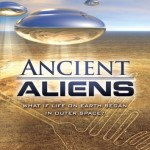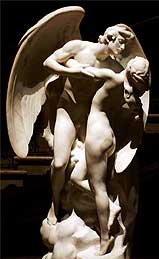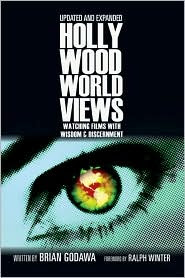By Cris Putnam
 It pains me to write this but I have lost all respect for Billy Graham and his organization. Just as I Am: the Autobiography of Billy Graham begins intriguingly framing Billy’s career between two US Presidents: Truman in 1950 at the dawn of the Korean War and President Bush forty two years later with the North Korean nuclear issue. From the heights of international intrigue and diplomacy, the reader is plunged to a rural dairy farm outside of Charlotte, NC where Billy grew up and experienced conversion during the altar call of Mordecai Fowler Ham.[1] After his meteoric rise, Graham had the ear of every President from Truman to Bush Jr.
It pains me to write this but I have lost all respect for Billy Graham and his organization. Just as I Am: the Autobiography of Billy Graham begins intriguingly framing Billy’s career between two US Presidents: Truman in 1950 at the dawn of the Korean War and President Bush forty two years later with the North Korean nuclear issue. From the heights of international intrigue and diplomacy, the reader is plunged to a rural dairy farm outside of Charlotte, NC where Billy grew up and experienced conversion during the altar call of Mordecai Fowler Ham.[1] After his meteoric rise, Graham had the ear of every President from Truman to Bush Jr.
Transparently, he admits he was a naïve star-struck country boy. Accordingly, Graham usually assumed the best about politicians and it is clear that they used him for political expediency. For instance, John F. Kennedy took him golfing and then unexpectedly thrust him into a press conference ill-prepared. At the time there was a lot of tension surrounding Kennedy’s Catholicism. Graham recalls, “Though Mr. Kennedy was using me for his own purposes, I didn’t mind speaking out.”[2] While the issue of a Catholic president had significance, later developments are more troubling. Graham maintained a close friendship with Lyndon B. Johnson of whom history reveals had a questionable agenda. Johnson’s premise for the Vietnam War, the Gulf of Tonkin incident, has been discredited by a NSA study declassified in 2005 revealing it was a manufactured to justify US intervention.[3] We entered that war based on a known lie from our President. How many were killed and maimed? Graham was also very close to Richard Nixon whom he defended during the Watergate investigation. Later, when the tapes went public, Graham writes he was shocked by the deviousness and foul language. Yet, Graham himself was caught as well. He writes, “I felt physically sick, and went into seclusion…”[4] Even so, Graham later encouraged Gerald Ford to pardon Nixon,[5] a decision which is still very controversial. In the end, he laments,
“If I had it to do over again, I would also avoid any semblance of involvement in partisan politics.”[6]
That statement earned my respect when I first read it and you are left with the impression he learned his lesson. Unfortunately, he did not and my respect has gone the way of The Billy Graham Evangelism Association’s integrity. It’s gone.
If anything he has stooped to a new low. Graham has not only given a tacit endorsement to a Mormon Bishop Mitt Romney, he prayed with him and did not utter a word against Mormonism. It is not at all clear to me that Romney has any genuine convictions on abortion or same sex marriage. His alleged positions seem to be nothing more than expediency given his record. Nevertheless, in light of the pluralism of our culture and the LDS propaganda which promotes the lie that they are merely a different “Christian” denomination, this is unconscionable. Now the media has uncovered that The Billy Graham Evangelistic Association has scrubbed their website of all references to Mormonism as a non-Christian cult. This is the worst kind of revisionist political expediency.
The Graham association has defended its actions saying they did not want to divert the political discussion with theological debate. Ken Barun, BGEA chief of staff, told CNN, “We removed the information from the website because we do not wish to participate in a theological debate about something that has become politicized during this campaign.”[7] In doing so, they have made their priorities clear. Unfortunately, for all intents and purposes, they have admitted that politics takes precedence over theological truth. Truly, they are no longer a ministry and their 501C status should be revoked. It seems crystal clear that political conservatism is an idol for many American evangelicals and the Billy Graham organization brazenly promotes this idolatry. It is spiritual whoredom. What happened to epiphany in Just as I Am Billy?
Also see A Wideness in God’s Mercy? for John MacArthur’s rebuke of Graham’s inclusivist soteriology.
In case you are wondering, my personal views are expressed very well by Judge Napolitano, I view partisan politics as the bread and circuses of the new millennium.
As of today, I am convinced that partisan politics is nothing but idolatry.
[1] Billy Graham, Just as I Am: the Autobiography of Billy Graham (NY: HarperOne, 1997) 29.
[2] Ibid, 396.
[3] Robert J. Hanyok, “Skunks, Bogies, Silent Hounds, and the Flying Fish: The Gulf of Tonkin Mystery, 2-4 August 1964”, Cryptologic Quarterly 20, 1 (Spring 2001): 175.
[4] Graham, Just, 457.
[5] Ibid, 468.
[6] Ibid, 724.
[7] http://religion.blogs.cnn.com/2012/10/16/billy-grahams-group-removes-mormon-cult-reference-from-website-after-romney-meeting/comment-page-2/








